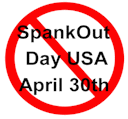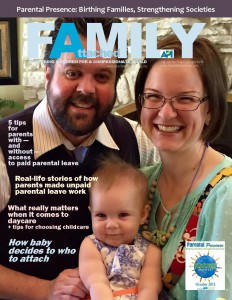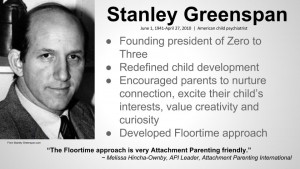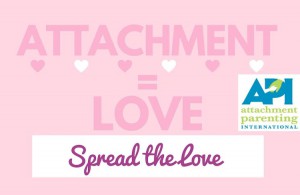“All behavior is communication.” ~ Linda Hatfield, cofounder of Parenting from the Heart
 Today, as we celebrate SpankOut Day April 30th — an annual observance founded by the Center for Effective Discipline (now part of the Gundersen National Child Protection Training Center) to bring attention to the need to stop physical punishment of children and promote nonviolent discipline — I want to encourage everyone to take this movement a step further than ending spanking as a discipline method. It’s time to talk about timeout and the detrimental effects this very widespread alternative to spanking has on children, families and society.
Today, as we celebrate SpankOut Day April 30th — an annual observance founded by the Center for Effective Discipline (now part of the Gundersen National Child Protection Training Center) to bring attention to the need to stop physical punishment of children and promote nonviolent discipline — I want to encourage everyone to take this movement a step further than ending spanking as a discipline method. It’s time to talk about timeout and the detrimental effects this very widespread alternative to spanking has on children, families and society.
This week’s featured article is “Why you should never use timeouts on your kids” from PBS Newshour. It is written by journalist and parenting blogger Wendy Thomas Russell who shares what she’s learned about using timeouts and why they’re really no better than hitting our kids.
“Decades of neuroscience and social research have shown that timeouts and other methods of punishment are not only ineffective in steering the behavior of children but outright damaging,” Wendy writes.
You read that right.
The fact of the matter is all punishments are damaging. It doesn’t matter if its spanking or timeout or taking away privileges or any other punishment. Every form of punishment is harmful, as Wendy reports, because “it takes the core need of the child and uses it as a bargaining chip.”
The core need she points out here is emotional attachment. Timeout separates parents and children, using the child’s emotional needs as a trade — if the child wants that attachment, he or she has to do this certain behavior, even if that behavior compromises another need, such as hunger, tiredness, or acceptance…and even if that behavior is not even developmentally appropriate for that child.
I like how Wendy describes children’s misbehavior — that children simply do not misbehave. All they do is behave, and their behavior — as so many attached parents understand — is a reflection of their needs in combination with their biological development stage. So a 2-year-old child is going to behave differently when hungry or tired or unwell or sad or angry or scared or overstimulated or bored or happy than a 6 year old or an 8 year old or an 11 year old. And it’s our job, as parents, not to punish them for their innate, biologically driven behavior but to guide them toward behaviors that help them cope with the situation.
If we look at spanking, parents who use spanking or hitting or physical punishment are hurting their children in their attempt to teach. If we look at timeout, parents are also hurting their children in their attempt to teach — through isolation and ignoring — and this type of emotional pain is just as damaging to a child as physical pain. What children are learning when they’re in pain or fear of pain is much different than what they are learning when not afraid or in pain.
Think about if you are trying to learn a new skill. Let’s say it’s painting a picture. If your painting instructor yells at you, hits you, or puts you in a corner every time you make a brush stroke she doesn’t like, what are you learning? Anxiety mostly.
If that same instructor guides you on how to hold the brush, how to put the paint on the brush, how to sweep the stroke over the canvas — exercising patience for your skill level, without punishment — what are you learning? How to paint.
Some parents may see this as a long way from trying to teach children not to do certain behaviors, but what all parents are trying to teach are actually skills — life skills. And considering that children learn more from what parents model, the skills that parents are teaching when they spank, issue timeouts, or use other punishments is to feel anxious and afraid, to expect physical or emotional pain when they approach a behavior boundary, and to react to feeling angry by controlling and coercing others.
That is violence.
Let’s promote nonviolence. And we can do it. Many parents when faced with the alternative of not spanking, using timeouts, or punishment assume that there are no ways to discipline their children. But discipline does not equal punishment. There are far more ways to discipline a child without punishment than with, and to be honest, nonviolent discipline is far more effective than punishment in teaching children — every time.
Many, many, many parents who have done both punishment and positive discipline will tell you this. The problem is, many parents who use punishments and who criticize positive discipline have never really tried doing the latter. If they did, they are bound to learn what Sarah Clark at Mothering learned — that positive discipline works and doesn’t turn our children into brats and heathens, but rather into some really amazing kids motivated out of attachment, which is far more powerful than fear.
But it does take a definite learning curve for parents to learn to discipline without punishment. There’s a lot more at stake than simply changing their parenting behaviors regarding discipline. How each of us react when angry or feeling another strong emotion is tied into our own neurobiology shaped by how we ourselves were raised, and even how our parents were raised, as well as the generation we grew up in and the community and society we knew then. Punishment is rooted in a worldview that goes way beyond the moment a parent feels angry and strikes her child or shuts his child, screaming and begging (even if not out loud) to come out, in his room.
All this to say that as we gently push our society toward positive, emotionally healthy relationships, we have to be patient with one another. We have to recognize how far society has come, and while it has a long way to go, we are making progress — bit by bit — through this Attachment Parenting movement. As parents and professionals hear more and more, from mainstream media especially, about the ever-mounting research of the negative effects of spanking, timeouts and other punishments — more parents will be willing to go through the hard work of addressing their often generations-deep perspectives on what it means to have a healthy relationship and to change their hearts toward parenting.
I applaud every parent who is on this journey toward a more trusting, empathic, affectionate, joyful, and peaceful family where punishment will some day have no home.
Even $5 makes a huge difference to furthering the Attachment Parenting movement, which relies exclusively on donations, to continue providing free education and support to parents around the world















